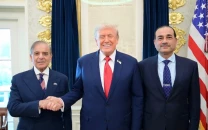Science’s top moon formation theory may be flawed
Recent research also suggests that Earth and the Moon are roughly the same age.

A new study led by planetary scientist Paolo Sossi has cast doubt on the widely accepted theory that the Moon was formed after a Mars-sized object, named Theia, collided with Earth.
Known as the giant impact hypothesis, this theory suggests that the Moon emerged from a cloud of debris following the impact. However, Paolo and his team have found no clear evidence to support the existence of such a massive collision.
The key lies in the isotopic composition of rocks from both the Earth’s mantle and the Moon. According to Sossi, the ratios of isotopes found in these samples are nearly identical. “Were there any trace of an impactor, we would expect to see small differences,” Sossi told ScienceAlert.
He argued that if an impact had occurred, the material from Earth and the Moon should show some variation in their elemental composition. Instead, their similarity suggests a different origin story.
Isotopic evidence raises questions
This does not entirely rule out the giant impact theory, but it highlights a major gap in the evidence supporting it. Sossi’s team proposes that Earth and the Moon may have formed from the same cloud of material, negating the need for a massive collision with Theia.
Recent research also suggests that Earth and the Moon are roughly the same age, forming around 4.5 billion years ago. This further strengthens the idea that they might have emerged from the same stardust without any third-party impact.
The findings have sparked renewed interest in Moon research. Sossi believes the next step is to probe deeper into the Moon’s interior to gather more data.
“The chemical and isotopic evidence is now sufficiently strong to start questioning the fundamental mechanisms of Moon formation,” he said, adding that collaboration across disciplines will be crucial to solving this cosmic mystery.
Though the true origins of the Moon remain uncertain, this new study may mark the beginning of a shift in how scientists understand the relationship between Earth and its natural satellite.



















COMMENTS
Comments are moderated and generally will be posted if they are on-topic and not abusive.
For more information, please see our Comments FAQ